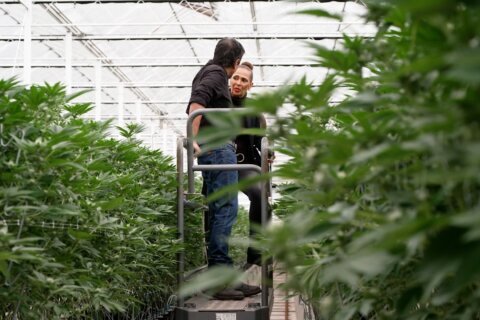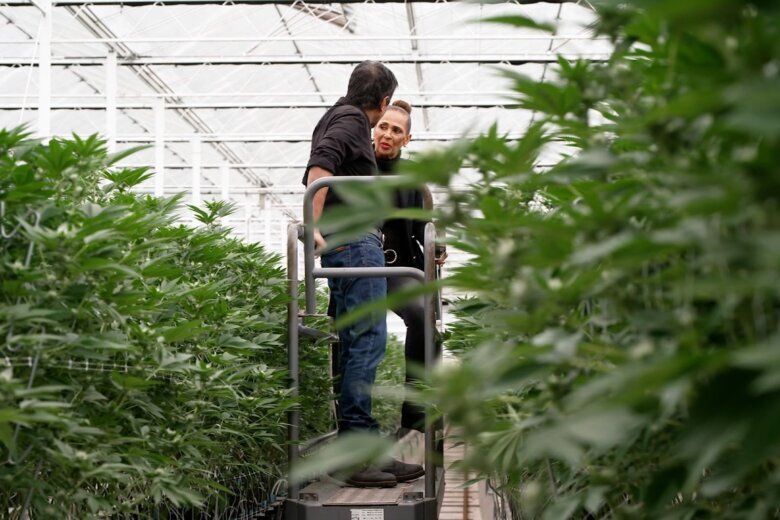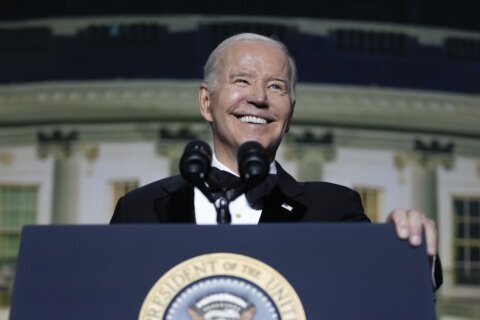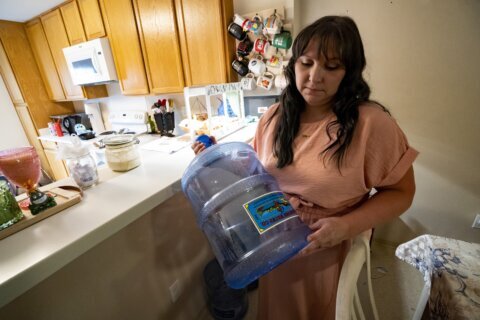
(CNN) — Prior to filming our first documentary on cannabis a decade ago, I was highly skeptical about its use as a medicine. I had even written a story for Time magazine a few years earlier to make the case that the evidence simply wasn’t there.
But, as so often happens when we start to dig into things, a different picture started to emerge. I traveled the world, visited tiny labs and, most important, spent time with patients — even young children — who changed my mind. I came to the realization that in some cases, not only did cannabis provide relief, it was the only thing that did so.
Yes, there are real risks, as with most things. And of course, it’s not a panacea. Nothing is.
While it is not something that will work for everyone, that should not mean it isn’t available to anyone.
Over the past few decades, we have experienced one of the most significant and uneven legal evolutions ever seen in the United States. Up until 1996, there wasn’t a single state that had legalized cannabis for any purpose, but now 38 states and the District of Columbia have some form of cannabis legally available, while it remains a Schedule I substance federally: “drugs with no currently accepted medical use and a high potential for abuse.“
The dissonance is deafening. In some states, it is still a crime to carry cannabis as a medicine, even if it quells the seizures of a small child.
Most remarkable to me is the demographic switch. Seniors — people over the age of 65 — are now the fastest growing group of cannabis users in the United States. Right now, we are witnessing a sort of “senior moment.” Honestly, it blows my mind.
People who grew up during the war on drugs and were in the formative years of their life when they experienced the impact of “Reefer Madness” are now willing to try cannabis, often for the first time. More often than not, according to recent studies, seniors use cannabis daily to help address some of the nuisances of aging: poor sleep, aches and pains, mood. And they regularly prefer it over the other medications they were often prescribed, such as sleeping pills, antidepressants and even opioids.
It’s why I decided to venture around the world again for our latest documentary, “Weed 7: A Senior Moment.” If it is true that cannabis could help decrease the number of medications seniors are taking, that could have tremendous implications.
Since 2020, The United States has spent $4 trillion a year on health care, of which almost $580 billion was spent on pharmaceuticals alone in 2021. When it comes to seniors, 30% of people over the age of 65 take five or more pharmaceuticals every day. But as they have increasingly turned to cannabis instead of pills, the expectation is that prescribed medication use may decrease.
As you will hear in the documentary, we witnessed a story emerge of more plants, fewer pills.
I also heard incredible personal stories – people like super congenial Ken Tillman, 94 years old, pretty healthy, still driving his nice Cadillac around Palm Beach, Florida. The first time he went to a dispensary, he was reluctant, shy and even a little embarrassed. The day I met him, however, he showed me around his dispensary, cracked jokes with the budtenders and was very specific about the strain he wanted: “mostly CBD, but some THC as well,” he told me.
He never even considered cannabis until he was 91. “Would never touch the stuff,” he told me.
“What made you start?” I asked.
“Sleep,” he said. “Just kept waking up in the middle of the night.”
Like one-third of the global population, Ken had developed terrible insomnia, and it was getting worse as he was getting older. None of the medications prescribed for him provided real relief, either not really working or keeping him groggy too far into the next day.
The hardest and most frightening thing about Ken’s insomnia is where his mind would take him while he lay awake in bed. He told me that in those moments, he started to ask the particularly haunting questions of life. “What are the things I wish I had done but no longer have the time to do?”
“Could’ve, should’ve, would’ve” was how Ken described it, with tears in his eyes. Honestly, it was painful to listen to someone who has come to the realization that too much time has passed to fulfill their dreams and visions.
But, here’s the thing: The story turned out well for Ken. With cannabis, not only did his sleep improve for the first time, but his existential anxiety was also quieted. For Ken, cannabis was far more than a sleep supplement. Again, it’s not to say everyone will have such a profound response, but for Ken, it was the only thing that really worked.
Part of the problem is that for many medications, we have a pretty clear idea of how they function. With cannabis, however, consisting of more than 100 cannabinoids and more than 400 other compounds, it is more complicated.
It often surprises people when I tell them that we have an endocannabinoid system. That means we humans have receptors for cannabinoids, and we even make cannabinoids ourselves. We are little cannabis-creating and -consuming creatures.
The purpose of the endocannabinoid system, according to esteemed Israeli researcher Dr. Dedi Meiri, is not to treat any particular ailment but rather to create balance in the body, known as homeostasis. It is when that homeostasis is lost, he says, that we become more susceptible to those nuisances of aging: sleep, pain, mood. As you probably surmised by now, as we get older, we make fewer of those cannabinoids, become deficient and increasingly lose the homeostasis. It is why Meiri recommended that his own mother use cannabis for her sleep issues.
Once again: a plant instead of pills. Perhaps the biggest change I have seen over the past 10 years is the face of cannabis. For me, it has always been Charlotte Figi, a sweet little girl who had so many seizures that her mom would just put her in the baby carrier, and feel her tremble all day long.
Nothing worked for her until one day, her mom, Paige, created a cannabis concoction in their kitchen sink, getting instructions off a YouTube video. Charlotte’s seizures went from more than 300 a week to practically none. I visited her over the Christmas holiday a couple years later, and she happily grabbed my hand and led me around a neighborhood party, something her family never imagined possible. Even though she sadly passed away a few years ago, Charlotte’s Web, a strain of cannabis created especially for her, still lives on.
Now, however, the face of cannabis also includes someone like “Mama Sue” Taylor. She’s a 75-year-old former Catholic high school teacher who was the one typically admonishing people for any sort of drug use at all. For her, cannabis had been no different than heroin or cocaine. But, like me, she started to dig into the research, talk to people and see its impact particularly on seniors.
She has now become an unlikely ambassador for cannabis across the United States, telling the first-hand stories of countless senior adults helped by cannabis and able to discontinue some of their other medications.
Mama Sue will acknowledge, like I do, that cannabis is not for everyone — and that there are risks. As cannabis use has increased among seniors, cannabis ER-related visits have gone up, too.
One of the biggest concerns is falls. Each year, 3 million seniors visit the emergency department due to falls, which can lead to a cascade of complications and often a terminal event. Cannabis could worsen those awful statistics.
Even Ken had a terrible episode one night, best described by him as a “bad trip.” He had committed the too-common error of “stacking”: Having taken an edible one evening and convinced it had no effect, he popped another one, effectively stacking one on top of the other. A couple hours later, he found himself clinging ferociously to the side of his bed, panicked and afraid to move.
He almost quit at that point, but with the help of Dr. Melanie Bone, who works in his senior living community, Ken was able to find a dose and strain that worked for him. It took trial and error, which is what many patients are left to do as a result of its Schedule I status.
At the end of our time together, Ken asked me if I would ever recommend cannabis for my own parents, who are in their late 70s; Ken referred to them as “kids.”
It was a fair question, and I immediately had funny visions of my teetotaler Indian mom, whom I have never seen have more than a sip of wine, sitting down and eating a gummy.
Of course, I would worry about falls and would want to make sure my parents had safeguards in place to protect against that. I would tell them it’s not a decision to be made lightly, and simply figuring out what strain and dose could be a bewildering experience. So the best advice is to “start low and go slow.”
I would want to make sure that they had excellent guidance like Bone had provided for Ken and that any signs of a cannabis use disorder could be detected early. But, in the end, there is no question that, especially for those nuisances of aging, cannabis could provide a relief they had been hard-pressed to find with the medications they were typically prescribed.
My answer to his question was “yes.”
And I guess that may be the biggest thing that has changed over the past 10 years. I would’ve never imagined a time when I would openly recommend cannabis to my own parents – or a time they would openly consider taking it.
“Why not? It can be a medicine, right?” my mom said when I raised the issue one day. My typically taciturn dad just smiled and nodded.
Cannabis can be a medicine, and like any other medication it should be held accountable for its risks and its rewards. It should be respected and made available, but also responsibly regulated. If all that is done well and safely, cannabis has the potential to help and heal so many people, young – and old.
The-CNN-Wire
™ & © 2023 Cable News Network, Inc., a Warner Bros. Discovery Company. All rights reserved.








